Conversations
Data Assistant conversations offer a simple, chat-based interface where you can enter freeform questions about your data and leverage generative AI to produce insights.
Open a New Conversation
By default, the Data Assistant is open in new sessions. You can toggle it on or off by clicking Data Assistant in the skill menu. To resize the Data Assistant conversation, click and drag the left edge. Alternatively, if you prefer to view the conversation in a full window, use the Data Assistant tab.
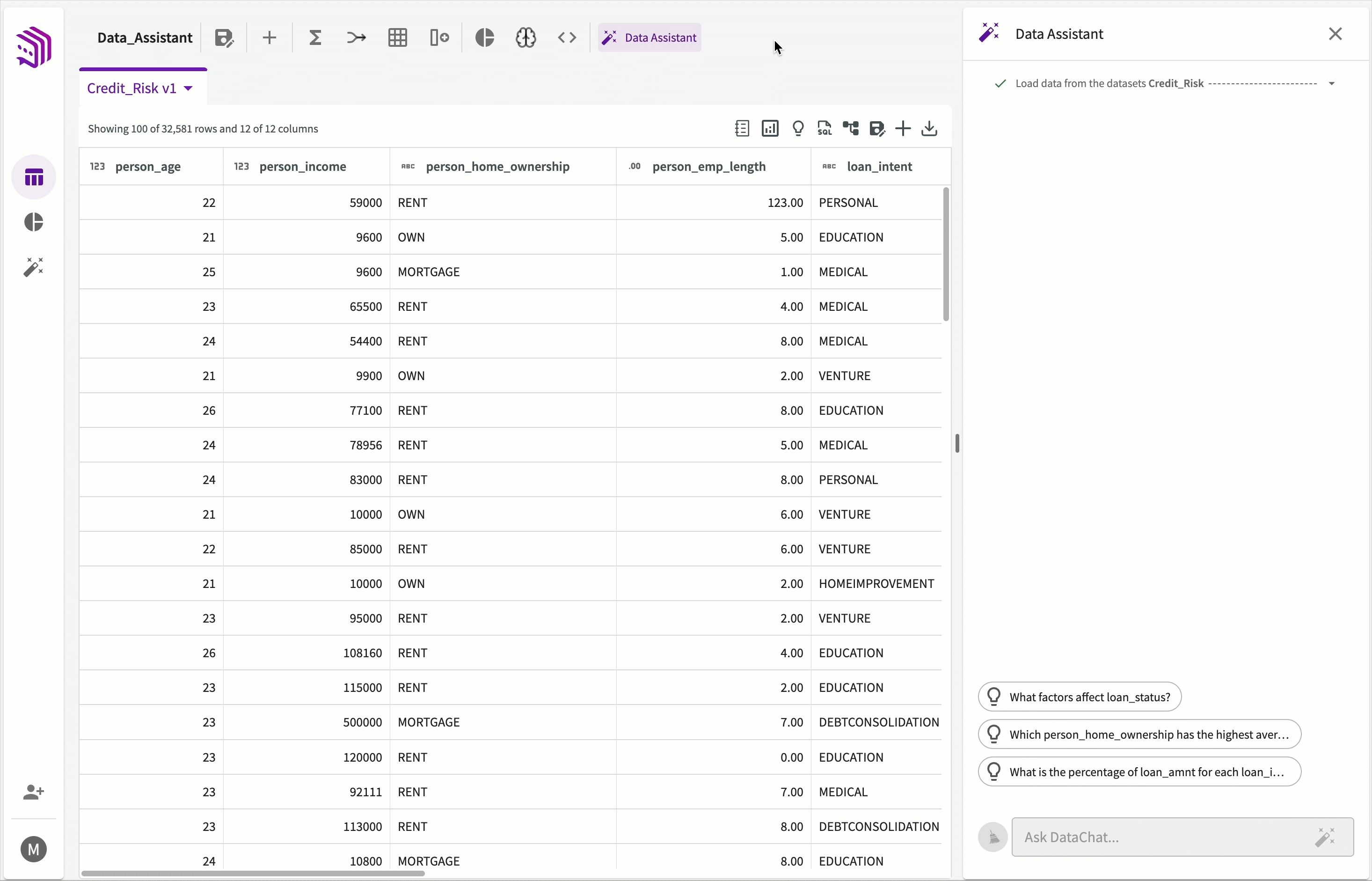
Conversations are unique to the session they're created in. The Data Assistant remembers the questions asked and responses given in each conversation, but these questions and responses can only be referenced in the same session they were created in.
If you've performed some actions on your data earlier in your session, those actions are also recorded in the conversation history.
Ask Questions
Once data is loaded into your session, you can begin asking questions. Enter your question in natural language, then click the wand icon or press Enter to let the Data Assistant find the answer. For example, if you wanted to know more about your monthly sales, you could ask, “What are my monthly sales?”
You can also ask the Data Assistant to generate visualizations. For example, if you wanted to view the sales data month over month, you could ask, "Show me a chart of average sales for each month," or, if you'd like to be more specific, "Plot a bar chart to show average sales for each month."
Some chart types are not available in the Data Assistant, including box, horizontal bar, and stacked area. Refer to Chart Types for more information.
Responses
When you ask a question, the Data Assistant automatically determines and runs the steps needed to produce an answer. You can watch the solution progress as it’s built, and the response header shows a summary of the steps taken.
Responses can include charts, tables, or both, depending on the complexity of the question. You can add these outputs directly to your Data or Chart tab by clicking Add to Data tab or Add to Chart tab below the output.
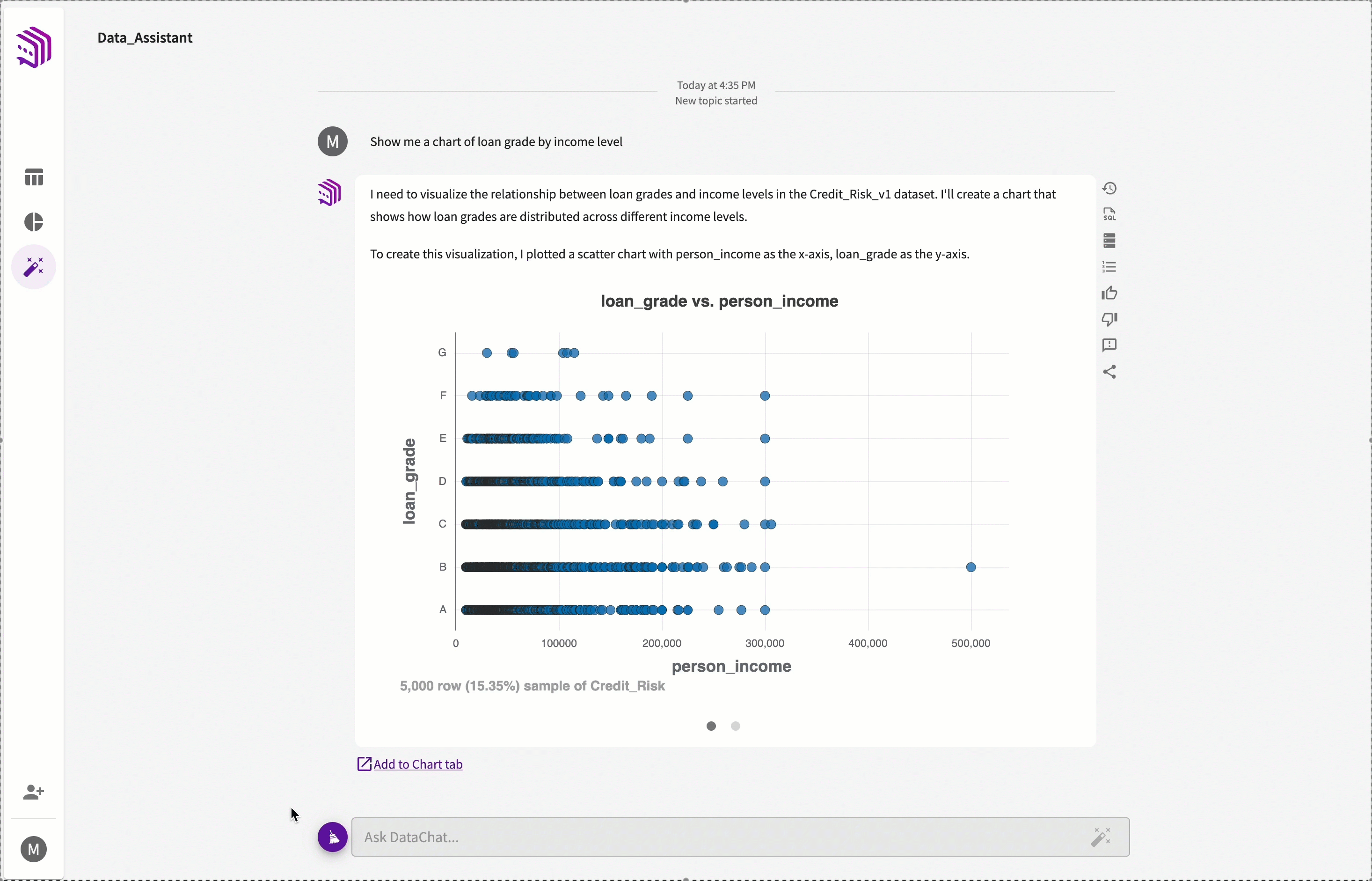
Charts also display the dataset used and, if edited, the timestamp of the latest modification.
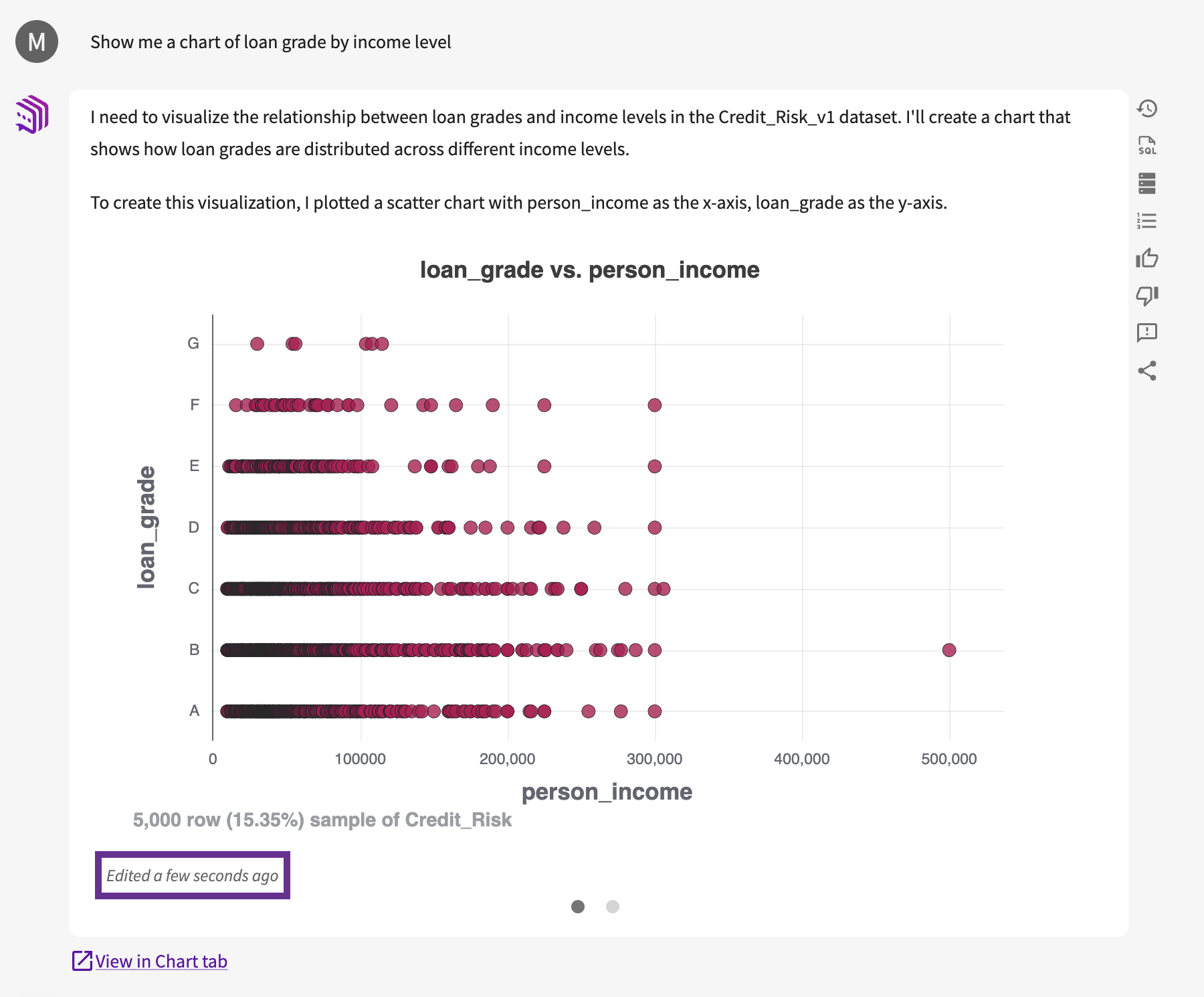
Self-Correcting Responses
In some cases, the Data Assistant may recognize that its first response didn’t fully match your question. When this happens, it automatically adjusts the analysis and returns an improved result. These updates are marked with an (i) icon. Hover over the icon to see what the original issue was and why it was adjusted. Since only the explanation is shown, we recommend reviewing the final result to make sure it meets your needs.
Empty Datasets
Occasionally, a response may return an empty dataset. In these cases, the Data Assistant provides hints about potential issues with the query rather than definitive explanations, as it does not have visibility into your data values. These hints can help you to identify which step in your workflow may have caused the empty result or pinpoint specific parts of that step to adjust or refine for better outcomes.
More Response Options
Each response includes additional options where you can:
- View Saved Responses
- View the Underlying SQL
- View Intermediate Datasets
- View the Underlying Workflow
- Provide Feedback

These options can be found in the response's more menu while in the Data tab.
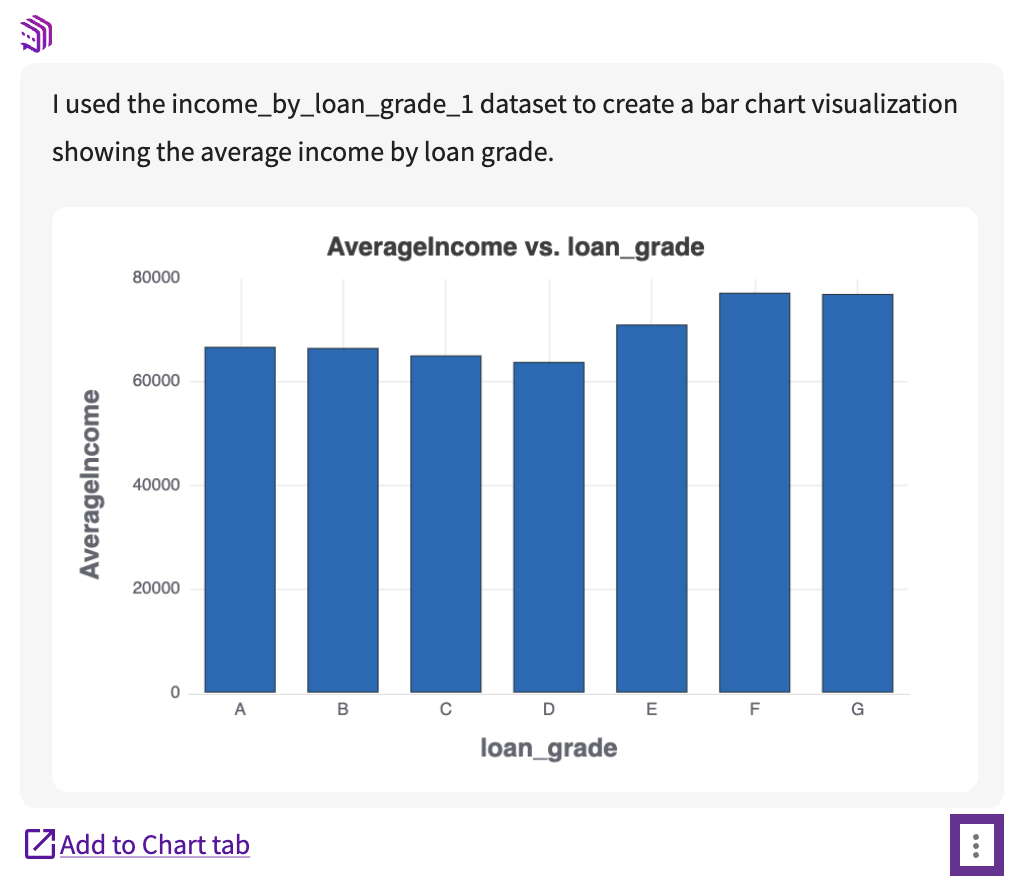
Saved Responses
When you give positive feedback on a response using the thumbs-up button, that response is saved as a Saved Response. These saved examples help the Data Assistant improve accuracy for similar future queries by learning from your specific context.
You can view and delete saved responses that contributed to the current answer by clicking the Saved Responses button. Note that this only shows the examples that were used to generate the current answer. It doesn't show all the responses you've ever saved.
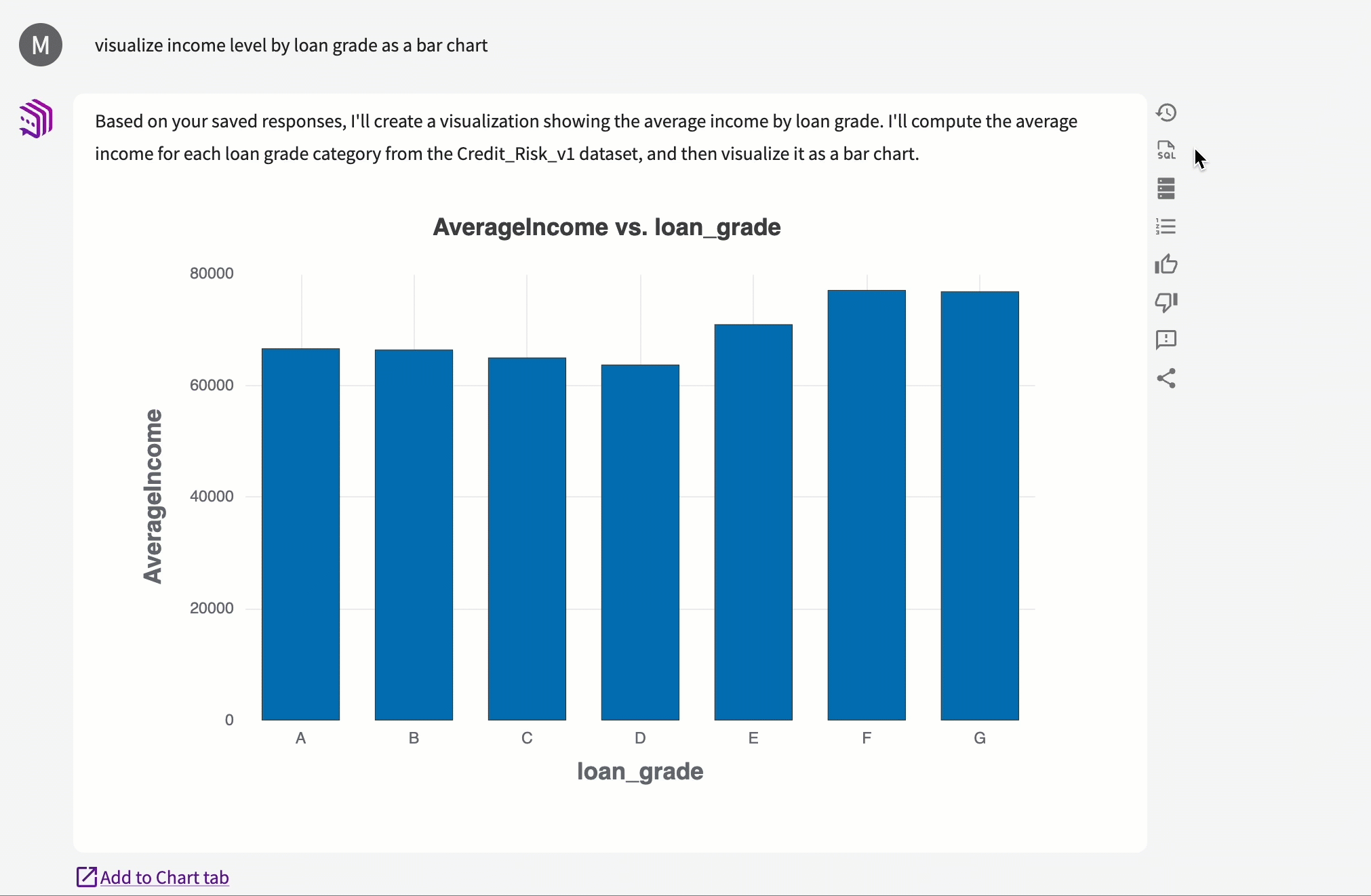
Ensure sure the Improve Data Assistant responses based on past feedback is enabled to create and use saved responses.
Underlying SQL
Click the Underlying SQL button to view the SQL queries behind Data Assistant responses.

Intermediate Datasets
When the Data Assistant modifies a dataset to answer your question by applying joins, filters, aggregations, or other steps, those intermediate datasets are saved and available to view. To view them, click the Intermediate Datasets button.
Each dataset corresponds to a specific step in the workflow. Hover the (i) icon to see which action it came from, or click the purple box to open the dataset in the Data tab.
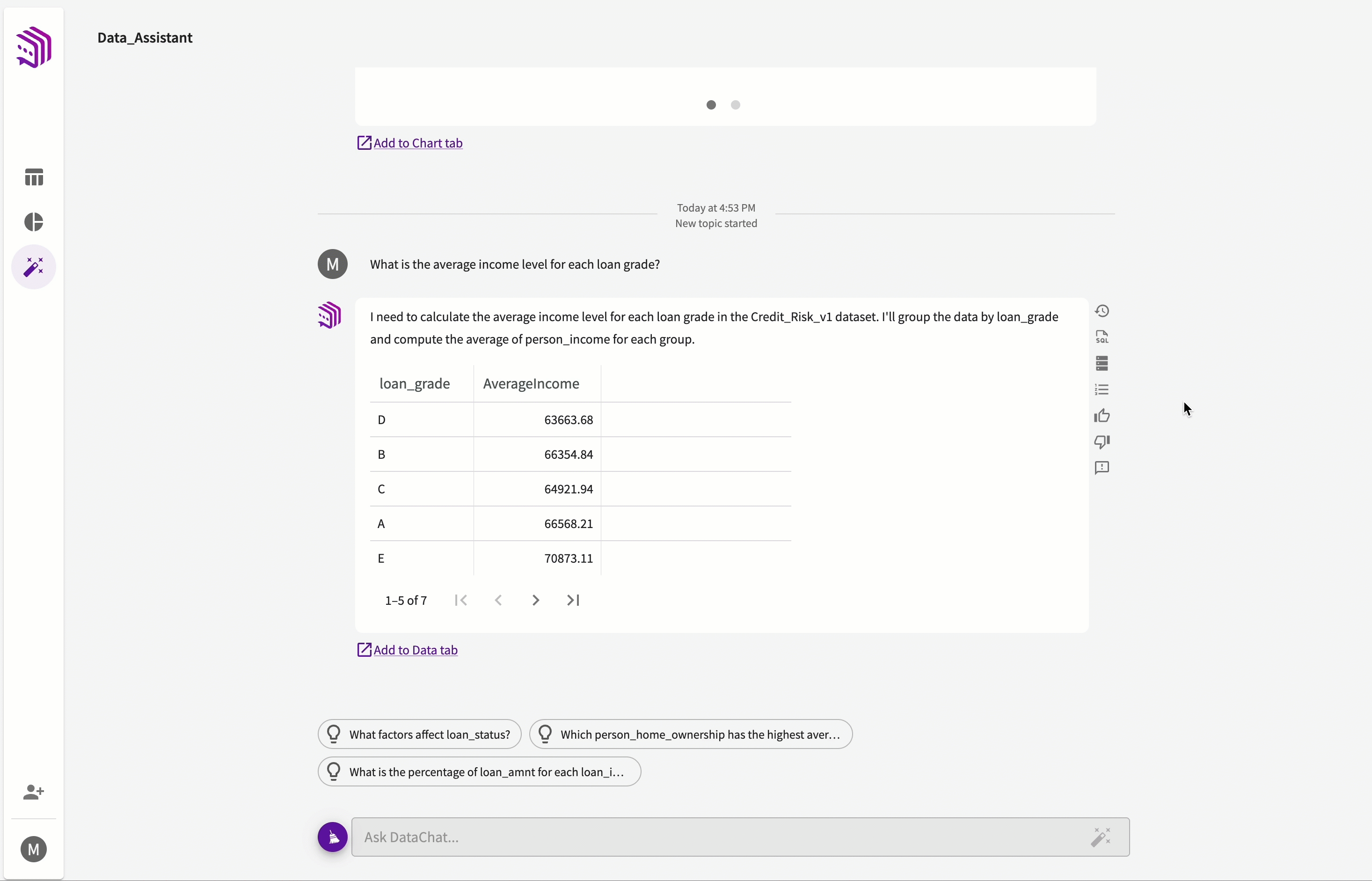
Underlying Workflow
To view a detailed breakdown of how the response was generated, click the Workflow button to see the steps used.
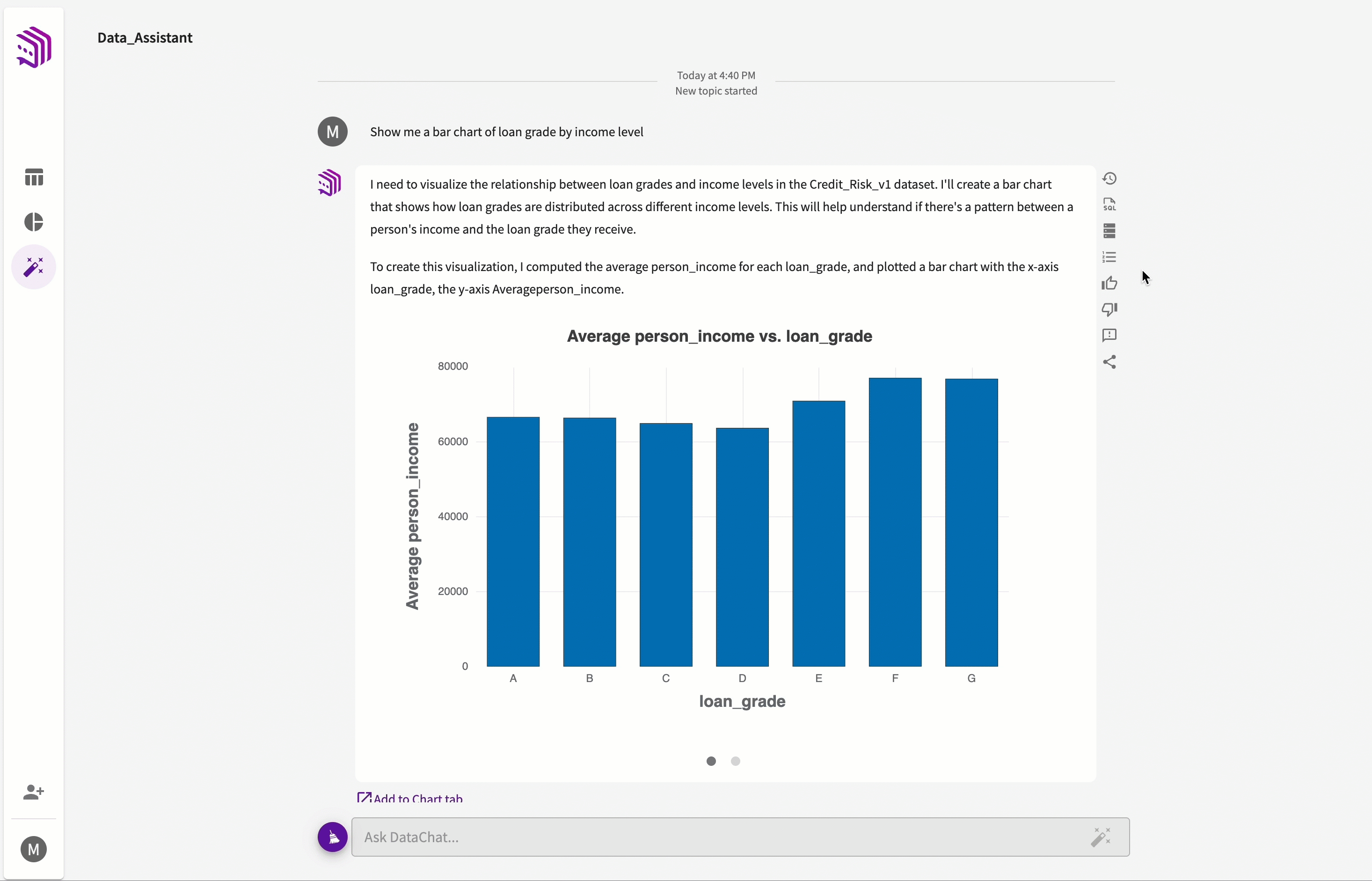
You can also copy the full workflow steps with the Copy Workflow button.

Feedback Buttons
Use the thumbs-up or thumbs-down buttons to give feedback on a response. This helps improve future results.
Clicking thumbs-up saves the response as a Saved Response. You can view and manage these by clicking the Saved Responses button.

To provide detailed feedback, click the Message button to open the Contact Us form.

Share Responses
To share responses through a public link, click the Share button. Note that this only applies to charts, and shares the specified response, not the entire conversation history.

Next Steps
Continue your analysis by asking follow-up questions, or switch to the Chart or Data tab for further exploration. All actions are captured in the conversation history and can be revisited later.
Clear Topic
To start a new conversation, click Clear your topic. This resets the session context so that previous questions and answers aren’t considered in future prompts.

When the conversation is successfully cleared, the button becomes disabled until more questions are asked.